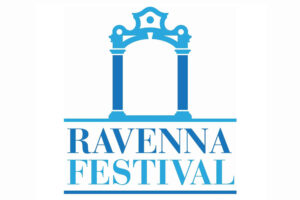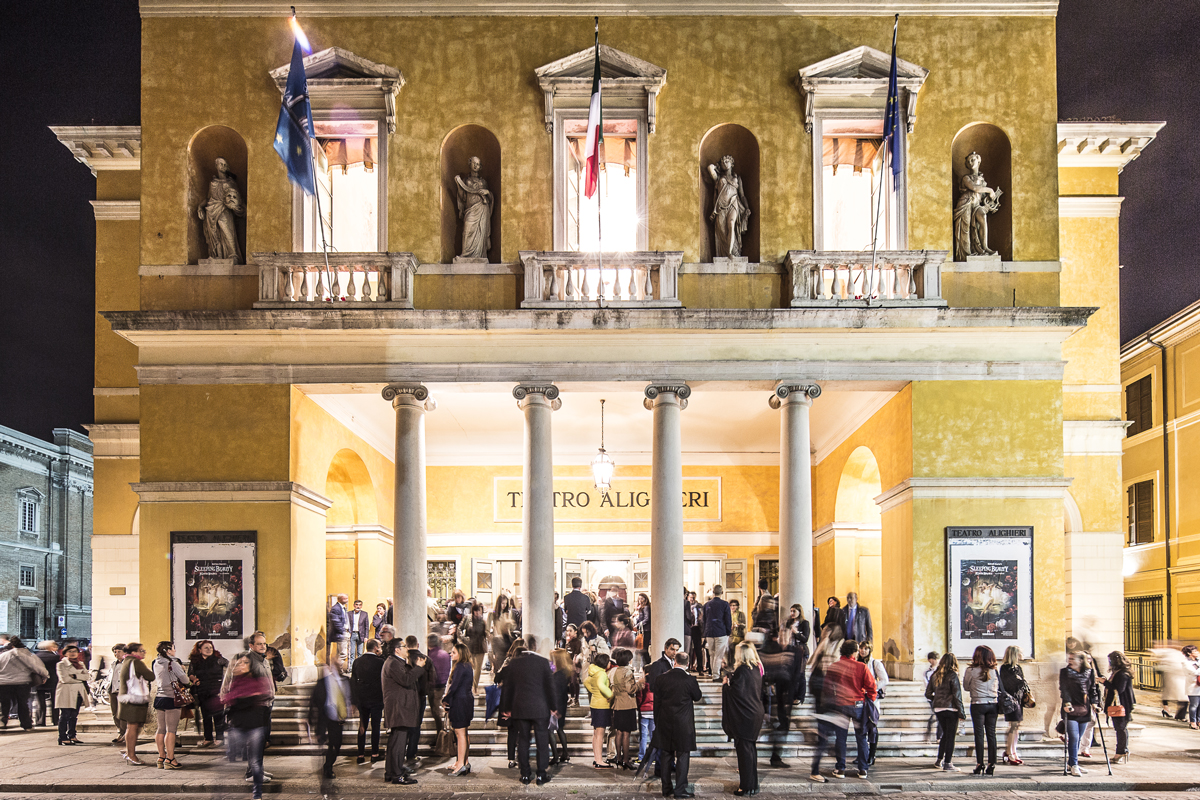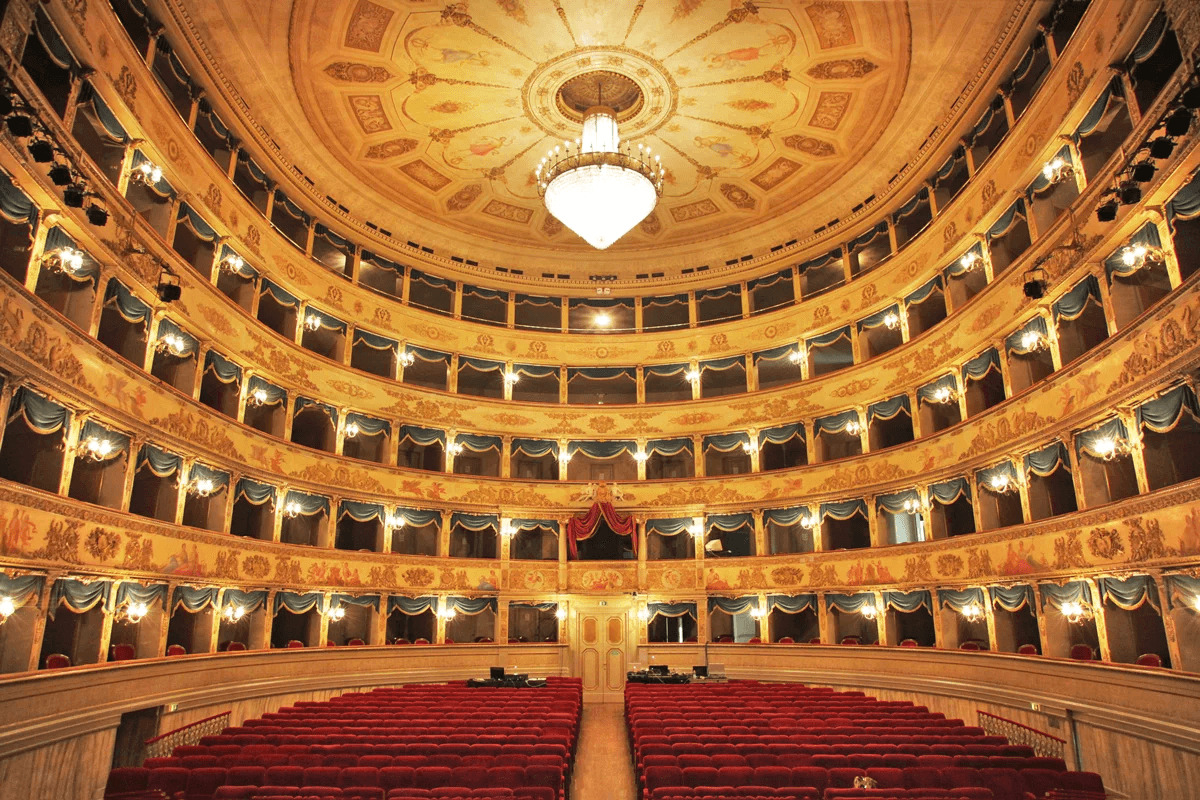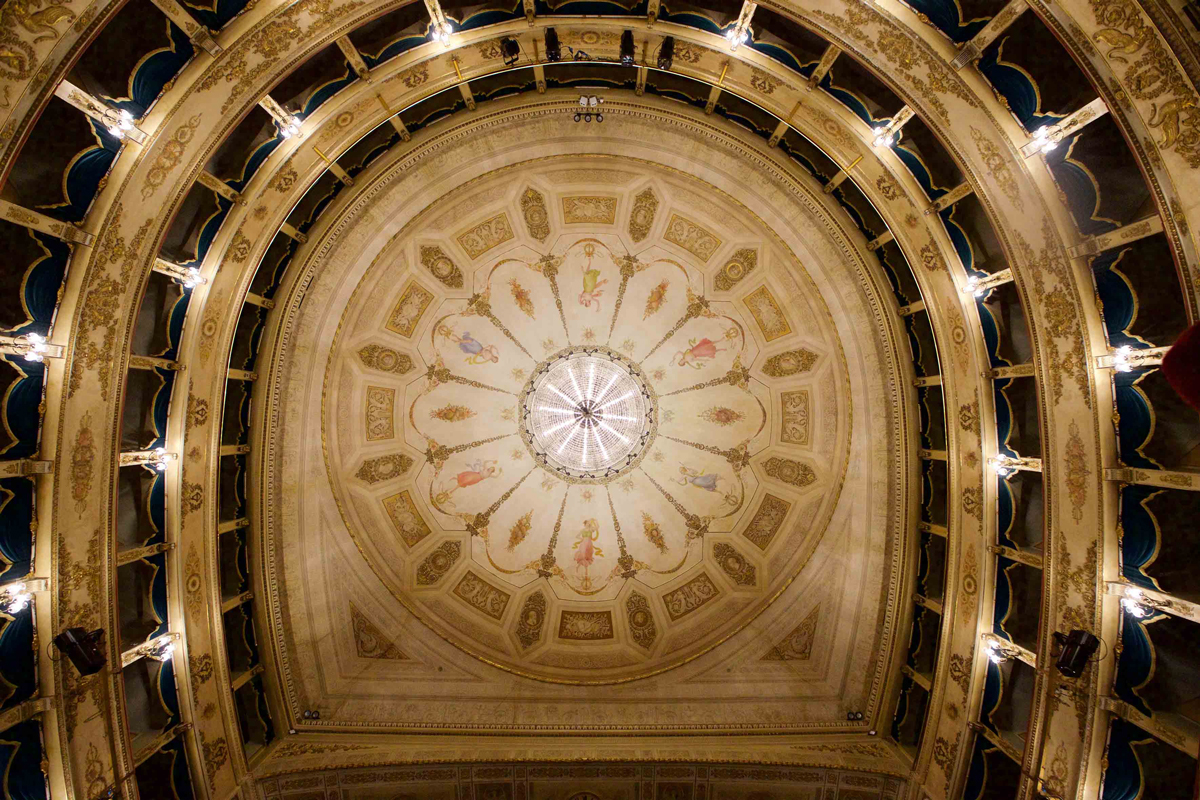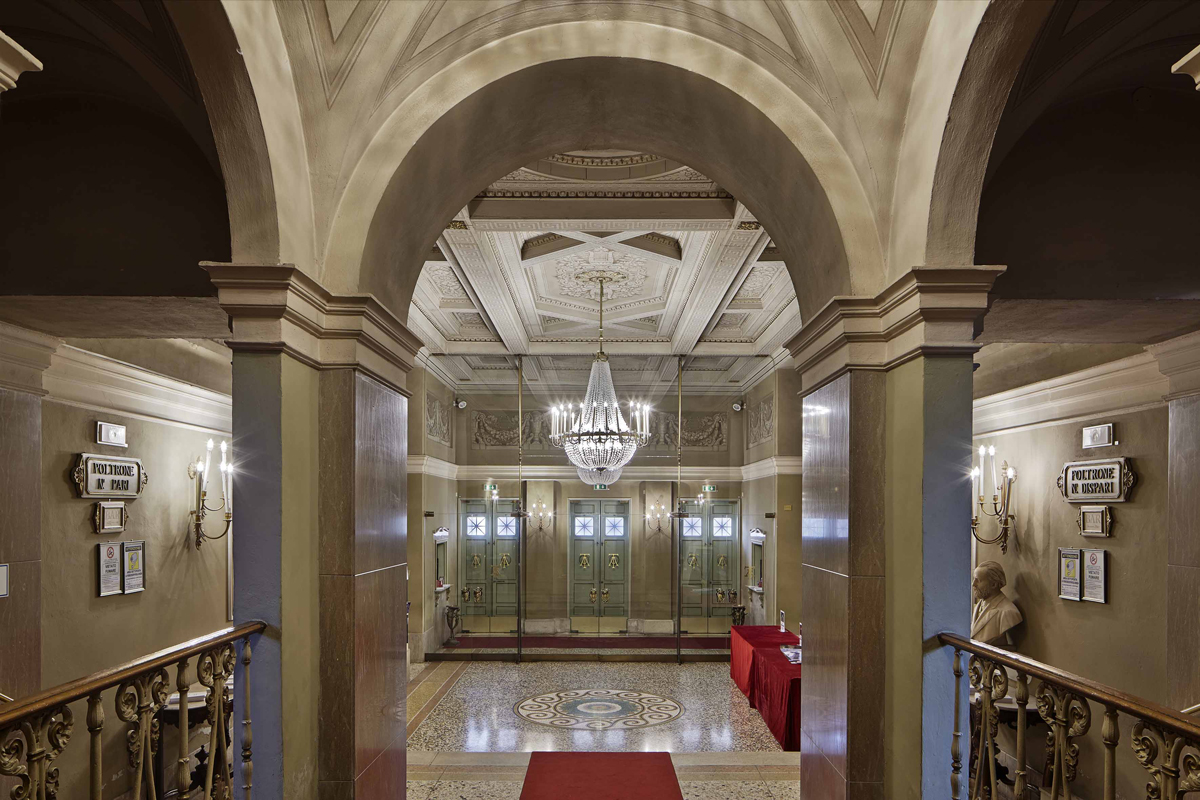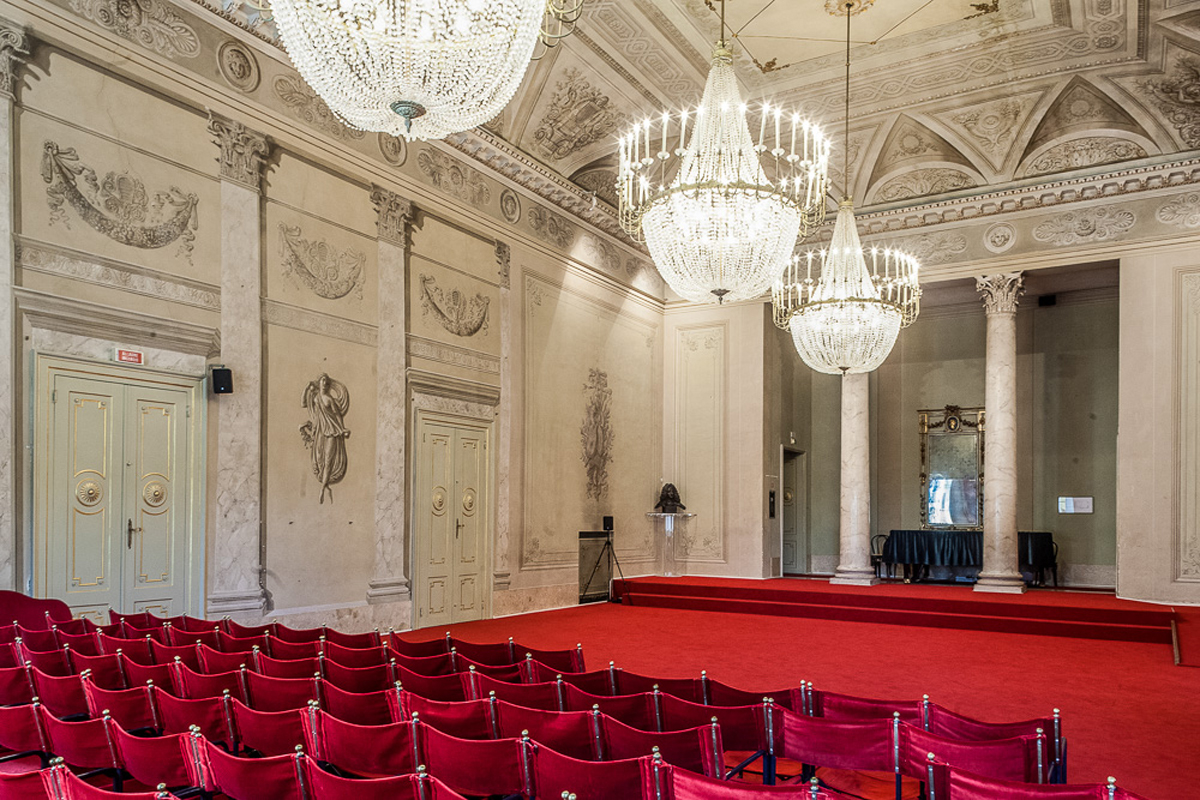The DANTE ALIGHIERI THEATRE is the most important theatre of Ravenna and the core of the theatrical activity of the city.
This theatre plays the main role in the local cultural programme, hosting concert, opera, ballet, prose and contemporary music seasons. It is also home to the annual Ravenna Festival.
History of a theatre
Le long theatre tradition of Ravenna dates back to the 16th century. Various halls and courts of public buildings – among which the Town Hall – occasionally (or regularly) hosted theatre and music shows.
But only in the 18th century the city was equipped with an actual theatre, teatro Comunitativo, which was then demolished at the end of the following century.
The foundation stone of the new Alighieri Theatre was layed in September 1840, when it was decided to build a brand-new building instead of renovating the old teatro Comunitativo. The building was erected in a new area that, even if very central, had remained at the sidelines of the city life until that moment and was subject to degradation: the so-called Piazzetta degli Svizzeri (today Piazza Garibaldi).
The construction of the building was entrusted to the Venetians Tomaso and Giovan Battista Meduna, who had recently completed the restoration of the famous La Fenice Theatre in Venice. Not dissimilar to the Venetian project, the result was a neoclassical building with a highly scenographic layout.
During the inauguration, on May 15th 1852, the new theatre was praised as one of the best equipped ones in Italy.
Since then, the theatre has hosted artists and personalities from all over the world, from Gabriele D’Annunzio to the “divine” Maria Callas – who performed La forza del destino here in 1954 – to the famous conductor Riccardo Muti.
The structure of the theatre
Externally divided into two floors, the facade of the theatre features a preojecting pronaos, with access stairs and a portico with four columns and Ionic capitals in the lower floor.
The wall of the upper floor features three alternating balconies with four recesses hosting statues added in 1967.
The lateral side, overlooking Piazza Garibaldi, is divided by two series of large recesses embedding windows and access doors, with a stretch of faux stone facing.
With its coffered ceiling, the entrance hall is flanked by two opening that were once used as a restaurant and a café, and introduces the visitors to the stairs leading to the stalls and the boxes.
The semi-elliptical theatre hall, originally featured four orders of 25 boxes (in the first order, the stalls replace the central box), and the gallery, with no internal division.
The stalls were located on an inclined plane (not as large as the current one), giving more space to the proscenium and the orchestra pit. The Neoclassical-style decotarions were realised by painters Giuseppe Voltan and Giuseppe Lorenzo Gatteri, with the collaboration of Pietro Garbato for the wooden and paper mache elements and of Carlo Franco for the gildings.
Voltan and Gatteri also supevised the decoration of the big Sala del Casino (current Sala del Ridotto dedicated to composer Arcangelo Corelli) surmounting the portico and the entrance all, flanked by the openings destined to gambling and dialogue.


